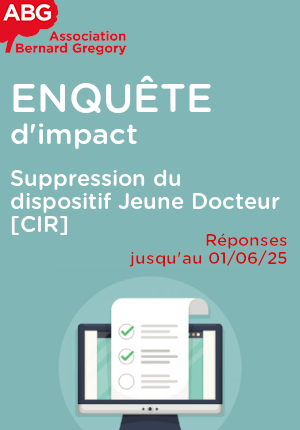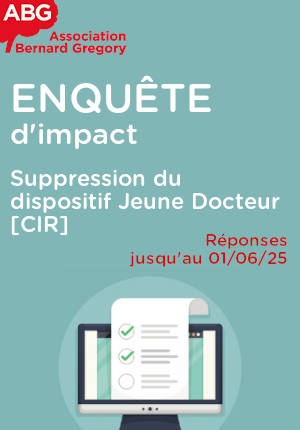Développement d'un modèle biologique 3D de moelle osseuse murine et humaine pour l'étude des plasmocytes // Development of a 3D murine and human bone marrow biological model for the study of plasmocytes
|
ABG-132107
ADUM-66127 |
Thesis topic | |
| 2025-05-21 | Public funding alone (i.e. government, region, European, international organization research grant) |
Université de Limoges
LIMOGES CEDEX - Nouvelle Aquitaine - France
Développement d'un modèle biologique 3D de moelle osseuse murine et humaine pour l'étude des plasmocytes // Development of a 3D murine and human bone marrow biological model for the study of plasmocytes
- Computer science
Plasmocytes, moelle osseuse, biomatériaux, culture cellulaire 3D, microscopie optique, spectroscopie optique
Plasmocytes, bone marrow, biomaterials, 3D cell culture, optical microscopy, optical spectroscopy
Plasmocytes, bone marrow, biomaterials, 3D cell culture, optical microscopy, optical spectroscopy
Topic description
Les plasmocytes, cellules qui produisent les anticorps, au cœur de la réponse immune humorale, peuvent dans certains cas, malins, proliférer anormalement et produire des anticorps pathogènes. Les plasmocytes représentent moins de 1% des cellules de la moelle osseuse, dans laquelle ils résident dans des niches (microenvironnements cellulaires et moléculaires) de maintien spécifiques qui leur assurent une longévité de plusieurs années, voire toute la vie. Cependant, une fois extraits de ces niches, ils meurent rapidement en quelques heures, rendant leur étude très compliquée. Dans ce contexte, la thèse proposée porte sur le développement d'un modèle de culture de moelle osseuse 3D dynamique permettant d'étudier les plasmocytes. Il s'agit d'une thèse interdisciplinaire, mêlant biologie cellulaire, immunologie, biomatériaux et photonique (microscopie). Le projet de recherche est porté par les laboratoires CRIBL, IRCER et XLIM dans le cadre du Labex Sigma-Lim.
------------------------------------------------------------------------------------------------------------------------------------------------------------------------
------------------------------------------------------------------------------------------------------------------------------------------------------------------------
Plasmocytes, cells that produce antibodies, at the heart of humoral immune response, may in some malignant cases proliferate abnormally and produce pathogen antibodies. Plasmocytes represent less than 1% of the cells of bone marrow, in which they reside in specific niches (cellular and molecular microenvironments) that provide them with a longevity of several years, or even an entire lifetime. However, once extracted from these niches, they die quickly in few hours, making their study very complicated. In this context, the proposed thesis deals with the development of a dynamic 3D bone marrow culture model allowing to study plasmocytes. It is an interdisciplinary thesis, mixing cell biology, immunology, biomaterials and photonics (microscopy). The research project is undertaken by CRIBL, IRCER and XLIM laboratories in the frame of Labex Sigma-Lim.
------------------------------------------------------------------------------------------------------------------------------------------------------------------------
------------------------------------------------------------------------------------------------------------------------------------------------------------------------
Début de la thèse : 01/10/2025
WEB : https://www.unilim.fr/labex_sigmalim
------------------------------------------------------------------------------------------------------------------------------------------------------------------------
------------------------------------------------------------------------------------------------------------------------------------------------------------------------
Plasmocytes, cells that produce antibodies, at the heart of humoral immune response, may in some malignant cases proliferate abnormally and produce pathogen antibodies. Plasmocytes represent less than 1% of the cells of bone marrow, in which they reside in specific niches (cellular and molecular microenvironments) that provide them with a longevity of several years, or even an entire lifetime. However, once extracted from these niches, they die quickly in few hours, making their study very complicated. In this context, the proposed thesis deals with the development of a dynamic 3D bone marrow culture model allowing to study plasmocytes. It is an interdisciplinary thesis, mixing cell biology, immunology, biomaterials and photonics (microscopy). The research project is undertaken by CRIBL, IRCER and XLIM laboratories in the frame of Labex Sigma-Lim.
------------------------------------------------------------------------------------------------------------------------------------------------------------------------
------------------------------------------------------------------------------------------------------------------------------------------------------------------------
Début de la thèse : 01/10/2025
WEB : https://www.unilim.fr/labex_sigmalim
Funding category
Public funding alone (i.e. government, region, European, international organization research grant)
Funding further details
Concours pour un contrat doctoral
Presentation of host institution and host laboratory
Université de Limoges
Institution awarding doctoral degree
Université de Limoges
Graduate school
653 Sciences et Ingénierie
Candidate's profile
Diplômé(e) d'un bac+5 dans le domaine des sciences de la vie, avec des connaissances solides en biologie cellulaire et immunologie, vous avez également un intérêt pour les méthodes d'imagerie. Des connaissances sur les biomatériaux pour la santé seraient un plus. La capacité à travailler et communiquer dans un environnement multidisciplinaire, l'autonomie et la prise d'initiative sont attendues, ainsi que des compétences rédactionnelles en français et en anglais.
------------------ Having a 5-year university degree, with a scientific background in cell biology and immunology, you also have an interest in imaging methods. Knowledge of biomaterials for health applications would be appreciated. Ability to work and communicate within a multidisciplinary environment, autonomy and initiative are expected, as well as writing skills in French and English.
------------------ Having a 5-year university degree, with a scientific background in cell biology and immunology, you also have an interest in imaging methods. Knowledge of biomaterials for health applications would be appreciated. Ability to work and communicate within a multidisciplinary environment, autonomy and initiative are expected, as well as writing skills in French and English.
2025-06-03
Apply
Close
Vous avez déjà un compte ?
Nouvel utilisateur ?
More information about ABG?
Get ABG’s monthly newsletters including news, job offers, grants & fellowships and a selection of relevant events…
Discover our members
 Généthon
Généthon  ANRT
ANRT  Institut Sup'biotech de Paris
Institut Sup'biotech de Paris  Ifremer
Ifremer  CASDEN
CASDEN  CESI
CESI  Aérocentre, Pôle d'excellence régional
Aérocentre, Pôle d'excellence régional  Nokia Bell Labs France
Nokia Bell Labs France  ONERA - The French Aerospace Lab
ONERA - The French Aerospace Lab  MabDesign
MabDesign  ASNR - Autorité de sûreté nucléaire et de radioprotection - Siège
ASNR - Autorité de sûreté nucléaire et de radioprotection - Siège  ADEME
ADEME  Tecknowmetrix
Tecknowmetrix  PhDOOC
PhDOOC  TotalEnergies
TotalEnergies  MabDesign
MabDesign  SUEZ
SUEZ  Laboratoire National de Métrologie et d'Essais - LNE
Laboratoire National de Métrologie et d'Essais - LNE  Groupe AFNOR - Association française de normalisation
Groupe AFNOR - Association française de normalisation







